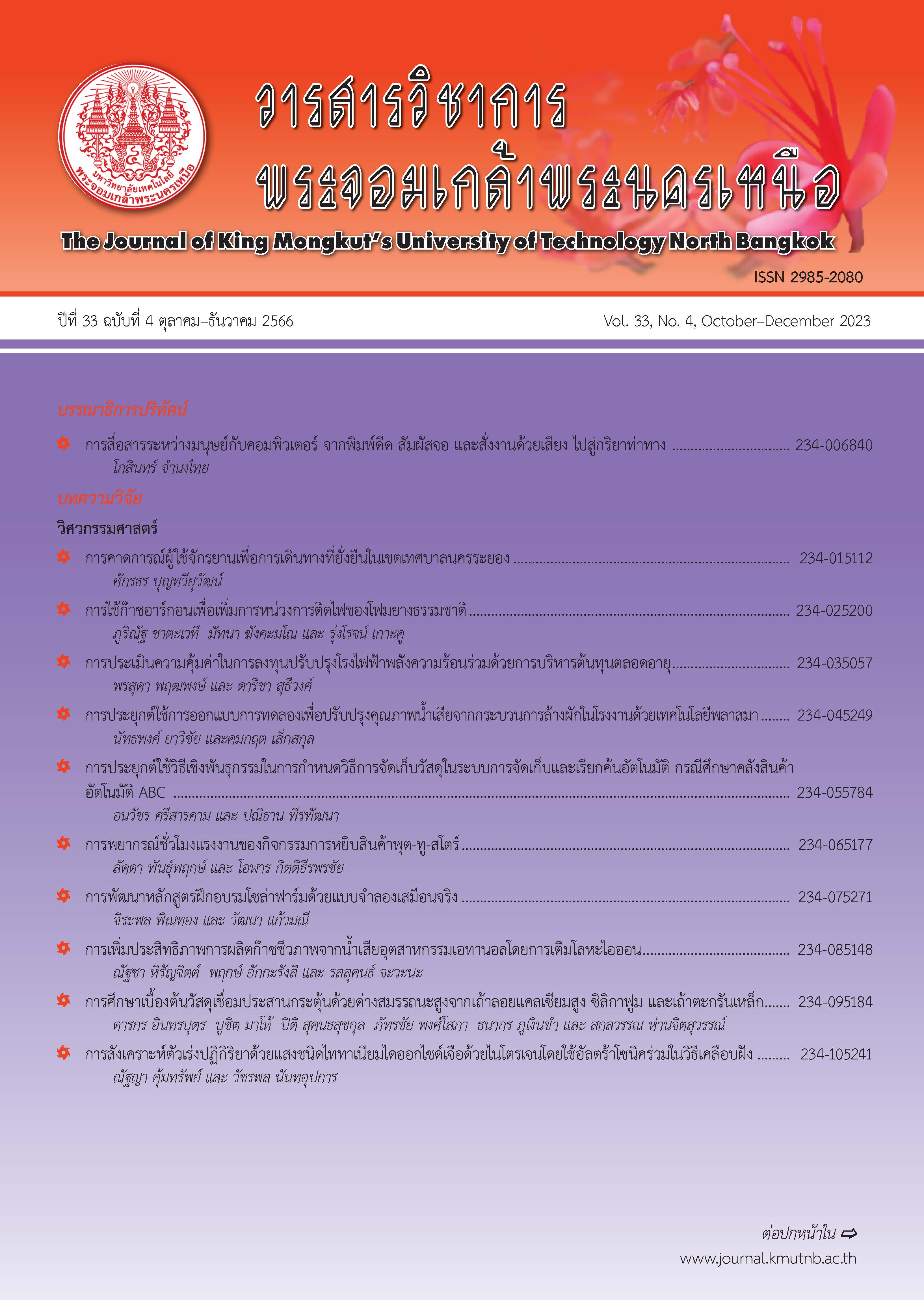The Study and Test the Implementation of the Reverse Folding Building Façade
Main Article Content
Abstract
This paper proposes a guideline for designing and implementing a two-dimensional (2D) to threedimensional (3D) folded wall panel with thin sheet material and a reverse folding pattern. The study framework was inspired by folding principles of "origami" which is the Japanese art of paper folding. The origami folds begin with the basic folding such as mountain and valley, then to the reverse and complex folding such as diagonal reverse fold in order to understand the potential of reversible folding in structures. The architectural and structural engineering researchers compared samples of each folding form, i.e. the deflection pattern and load capacity with a three-dimensional computer program. The results illustrated that both straight and diagonal reverse folding patterns were more substantial at the same area size than standard zigzag folding patterns. Finally, the results of this research were applied to other architectural designs with two-dimensional flat aluminum composite panel material to fold the three-dimensional shape of the building facade.
Article Details

This work is licensed under a Creative Commons Attribution-NonCommercial-NoDerivatives 4.0 International License.
The articles published are the opinion of the author only. The author is responsible for any legal consequences. That may arise from that article.
References
R. J. Lang, The complete book of Origami: step by step instructions in over 1000 diagrams, Courier Dover Publications, 1988, pp. 1–4.
P. Jackson, Folding techniques for designers from sheet to form, Laurance Publishig Ltd., 2011, pp. 15–18.
P. Engel, Folding the Universe: Origami from Angelfish to Zen, General Publishing Company Ltd., 1989, pp. 7–9.
H. Buri and Y. Weinand, Origami- folded plate structures, Architecture, Infoscience EPFL scientific publications, 2008.
Y. Nishiyama, “Miura folding: applying origami to space exploration,” International Journal of Pure and Applied Mathematics, vol. 79, no. 2, pp. 269–279, 2012.
I. Garibi, Origami tessellations for everyone, Sef Publishig, 2018, pp. 11–12.
M. Stavric and A. Wiltsche, “Quadrilateral patterns for rigid folding structures,” International Journal of Architectural Computing, vol. 12, pp. 61–79, 2014.
Computers and Structures. (2021). ETABS license number #*14FUN456QKUEAEM. New York. USA [Online]. Available: https:// www.csiamerica.com/products/etabs

